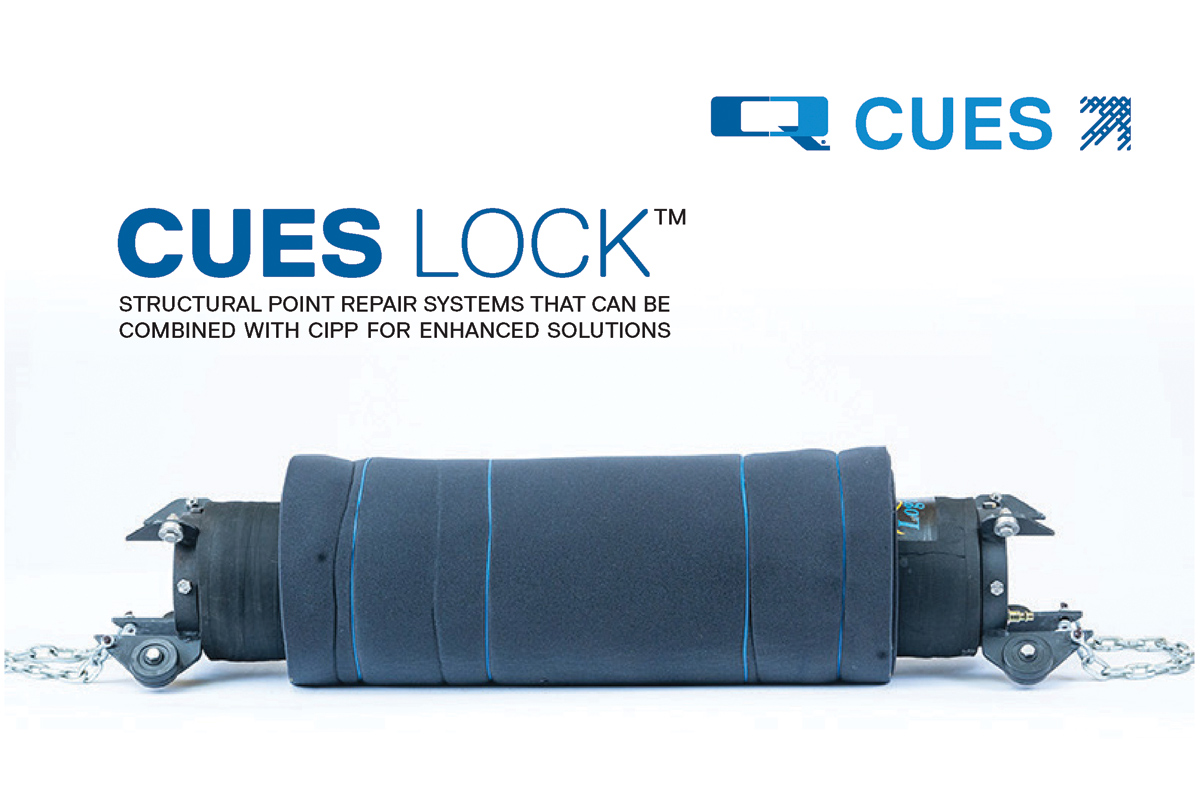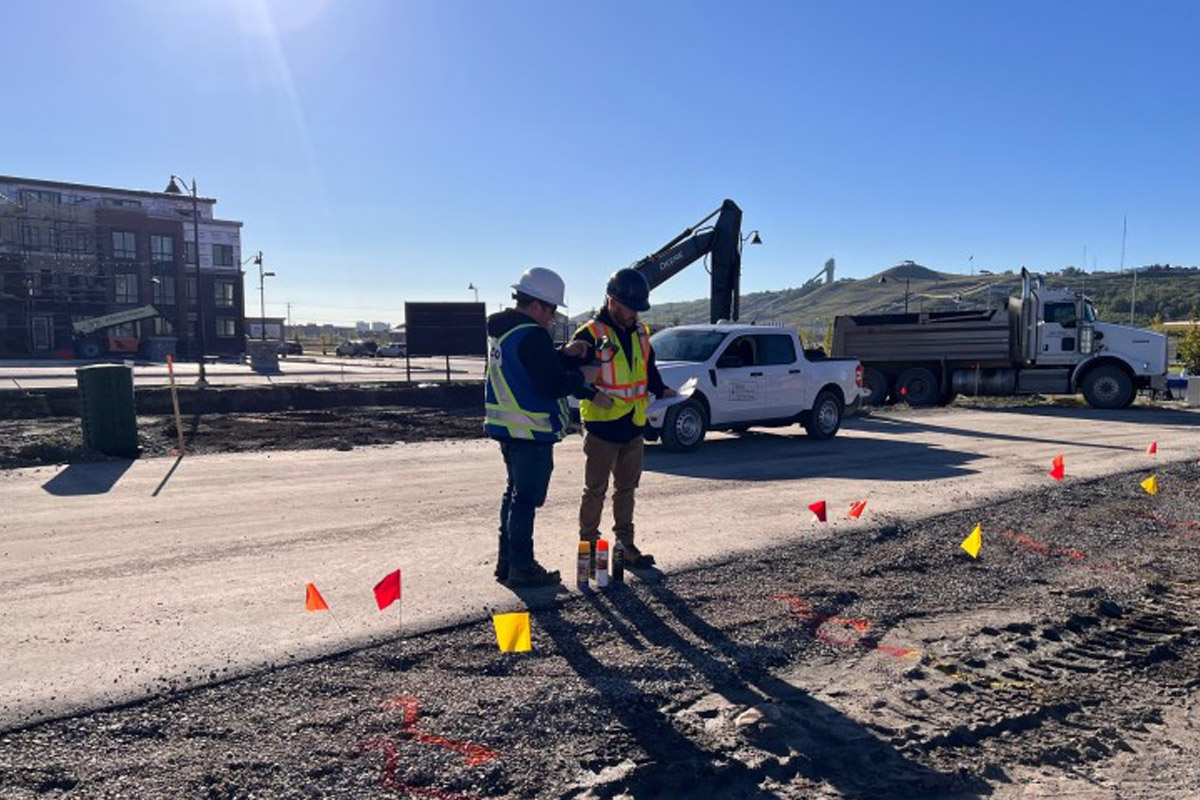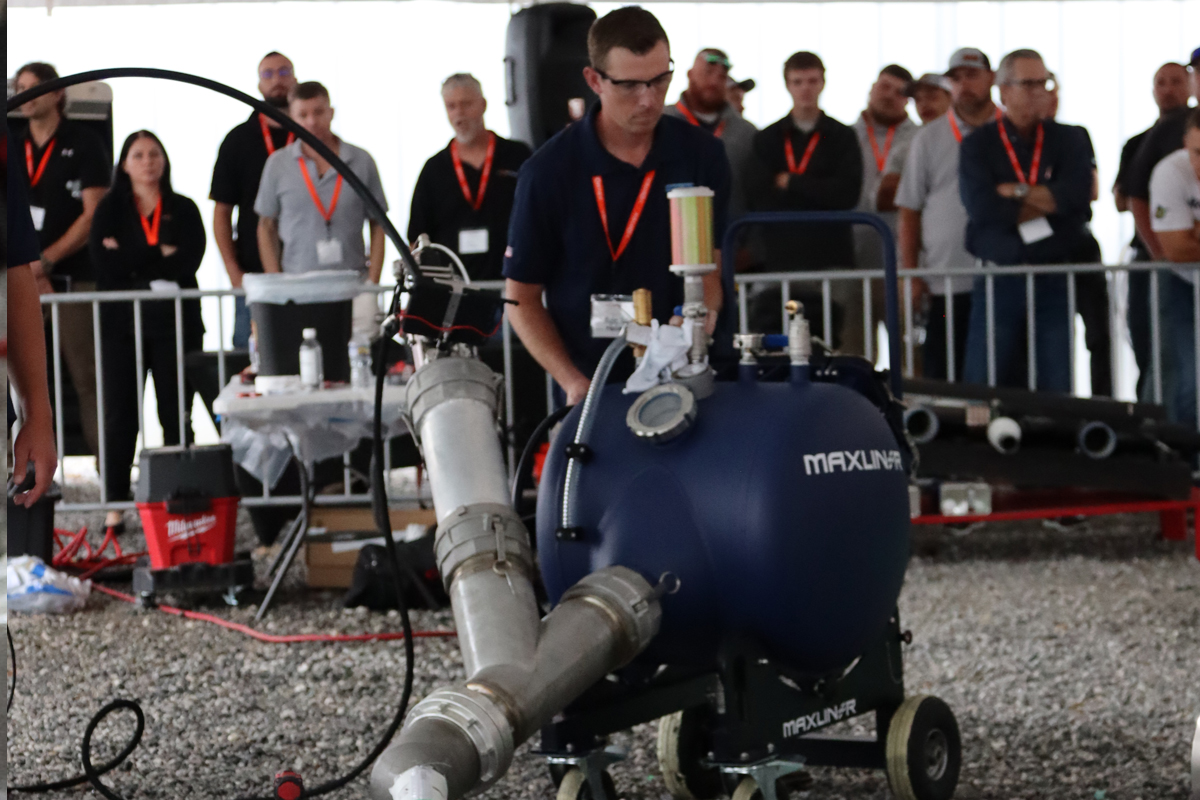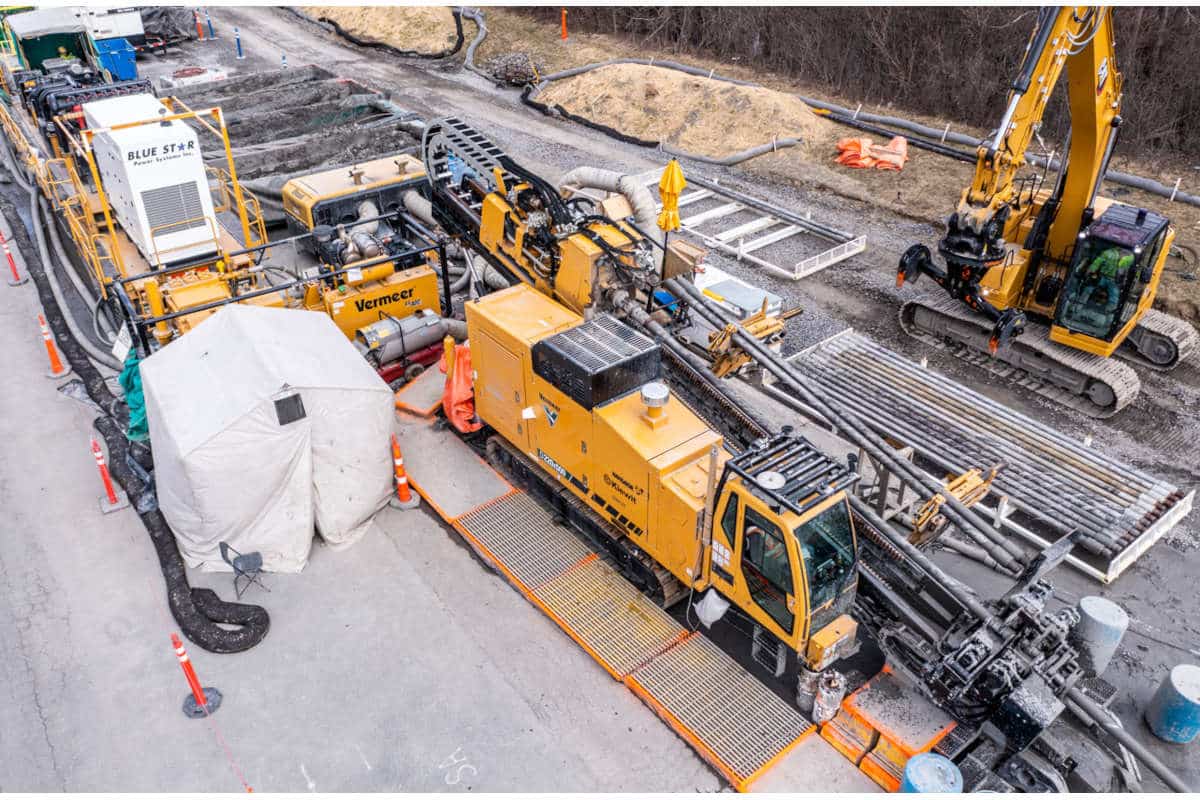
Short Project, Big Benefits
BC Contractor Uses Geopolymer Mortar to Rehab CMP Culvert
The City of North Vancouver, British Columbia, knew it had to act quickly before a corrugated metal pipe (CMP) culvert fully degraded and collapsed beneath a residential neighborhood.
The culvert, underneath a light duty road, was experiencing active infiltration and severe corrosion at its invert with visible holes throughout the structure. At 17.7 m long, with a 1.22 m diameter, the culvert’s short length meant that a cured-in-place pipe (CIPP) would be expensive due to the materials and mobilization required to complete a CIPP repair.
 The CMP culvert has an active stream running through it with plenty of aquatic life traveling through the structure, and the province has strict environmental regulations to protect local fauna during construction projects. Based on these facts, the City hoped to find a product and installation process that would more easily comply with these stringent protocols. The proximity of the culvert to surrounding residential properties meant a trenchless, non-disruptive repair would be an ideal solution for the City. Consistent pedestrian and vehicle traffic meant that maintaining an open roadway was a necessity for this project as well.
The CMP culvert has an active stream running through it with plenty of aquatic life traveling through the structure, and the province has strict environmental regulations to protect local fauna during construction projects. Based on these facts, the City hoped to find a product and installation process that would more easily comply with these stringent protocols. The proximity of the culvert to surrounding residential properties meant a trenchless, non-disruptive repair would be an ideal solution for the City. Consistent pedestrian and vehicle traffic meant that maintaining an open roadway was a necessity for this project as well.
Vector Corrosion Technologies Ltd., located in Delta, British Columbia, approached the city with a suggestion to use a geopolymer mortar system for this repair due to the short length of the culvert and the environmental regulations that would be associated with this project. Installing a geopolymer mortar system requires a limited amount of equipment — producing both a small environmental and construction footprint — as well as a small crew, meaning a smaller expense overall and less traffic disruptions compared to alternative solutions. North Vancouver also wanted to avoid significant mobilization, so choosing a local contractor like Vector was able to meet that criteria as well.
The significant cost savings and environmental compliance from using a geopolymer mortar prompted the City to hire Vector for the repair after reviewing its potential solution compared to alternative repair methods. This would be Vector’s first project using a geopolymer mortar system, so its supplier, Milliken Infrastructure Solutions, provided experienced personnel to join Vector at the job site to oversee operations and assist the team with any installation procedures when necessary.
RELATED: Considerations When Working with Geopolymer Mortar
A week prior to the project’s start date, Vector hosted an application demonstration of the geopolymer mortar product at its office to show North Vancouver officials how the system is applied. This demonstration gave the city’s leaders a better idea of how the product looks, the ease of its application, the amount of time needed for the material to set and the resulting finished coating on a corrugated metal pipe.
The project was to be completed in a residential neighborhood, so the Vector crew made sure to keep the residents informed of the culvert repair through communicating how long the team would be in the neighborhood and what delays, if any, to expect. The equipment needed to complete the project was set up on a residential street, and the working area was tight due to trying to avoid contact with any residential lawns or cause any disruption to normal traffic patterns within the community.
An internal bypass was set up to divert the active flow of water within the culvert, which ran through a pipe that was positioned at the bottom of the culvert. The team could not run the pipe over the road because doing so would disrupt traffic or even possibly shut down the road entirely. This bypass method allowed the crew to easily spray over the pipe and then hand-patch the bottom of the culvert where the bypass was after the other passes were finished, which is an added non-disruptive benefit of using a geopolymer mortar system over alternative repair methods.
 Over a three-day period, the team made three half-inch passes using an M-Tec duo sled system for 4 cm total repair thickness within the culvert. There was some delay with the repair because of heavy rains common to the area. The flash flooding and resulting extensive amount of groundwater that accumulated from the rain, however, had to be managed by the team and extra work time was needed to completely finish the repair.
Over a three-day period, the team made three half-inch passes using an M-Tec duo sled system for 4 cm total repair thickness within the culvert. There was some delay with the repair because of heavy rains common to the area. The flash flooding and resulting extensive amount of groundwater that accumulated from the rain, however, had to be managed by the team and extra work time was needed to completely finish the repair.
RELATED: A GeoPolymer Solution: Controlling Stormwater Infiltration in California
The strict environmental regulations of the City were recognized and acted on by the Vector crew. Prior to the start of the project, all aquatic life present in the culvert had to be salvaged and relocated before any work on the culvert itself could begin. All water was collected that was used during the project, including the cleanup water once the project was completed. All geopolymer mortar was contained within the project site and no surrounding area was affected by the product.
North Vancouver and residents of the neighborhood where the culvert is located were pleased with the quick repair and lack of disruption from using a geopolymer repair mortar. The crew from Vector were easily able to learn and implement the repair process on this culvert and hope to use this system for future projects in the area.




